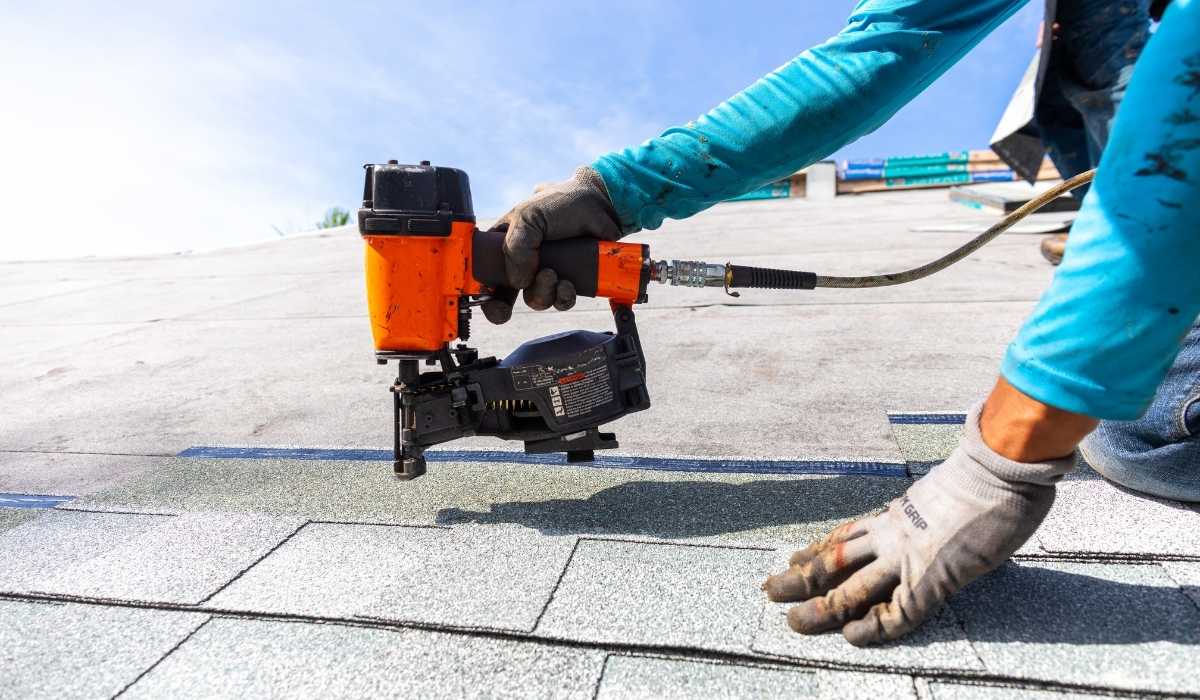How New Homeowners Can Prepare for a Successful Roof Installation
Becoming a homeowner is an exciting milestone, but with it comes the responsibility of maintaining and upgrading key areas of your property—one of the most important being the roof.
A roof installation is a significant investment that protects your home, enhances its appearance, and adds long-term value.
Whether you’re building a new home or replacing an old roof, understanding the process and preparing properly will ensure a smooth and successful experience.
This article outlines essential steps for new homeowners to take before, during, and after a roof installation, along with insights on finding professional roofers and choosing an affordable roof replacement near me.
Understanding the Importance of a New Roof Installation

A well-installed roof not only keeps your home dry and secure but also contributes to energy efficiency and curb appeal.
Since your roof is your home’s first line of defense against weather, a poor installation can lead to costly repairs, water damage, mold growth, and other issues.
That’s why preparing adequately and working with professional roofers is crucial for any new homeowner.
Key Benefits of a Proper Roof Installation:
- Longevity: A high-quality installation ensures your roof lasts for decades.
- Energy Efficiency: Proper insulation and materials help control indoor temperatures.
- Safety: A strong roof protects against structural damage from storms and wind.
- Increased Property Value: An updated, attractive roof can boost resale value.
Step 1: Do Your Homework Before the Installation
Preparation begins with research.
Before hiring a contractor or deciding on materials, it’s important to understand the basics of roof systems, your budget, and your home’s specific needs.
Things to Consider:
- Material Options: Asphalt shingles, metal, tile, and slate all have different lifespans and costs.
- Warranty Coverage: Check both manufacturer and contractor warranties.
- Weather Patterns: Consider the local climate in Metro Atlanta, where intense summer heat and sudden storms can impact roof performance.
- Neighborhood Restrictions: Some HOAs have guidelines on roofing materials or colors.
Once you have a foundational understanding, it’s time to look for professional roofers with local expertise.
Step 2: Choosing the Right Roofing Contractor
Finding the right roofing company can make or break your new roof installation project.
New homeowners often search for affordable roof replacement near me, but affordability shouldn’t compromise quality.
Tips for Choosing a Roofer:
- Local Experience: Choose a contractor familiar with Georgia’s building codes and weather challenges.
- Licensed and Insured: Make sure they carry liability and workers’ compensation insurance.
- References and Reviews: Look at online reviews and ask for local references.
- Detailed Estimates: A reliable roofer provides a clear written quote covering materials, labor, and timeline.
Pro Tip: A reputable contractor will also help you navigate insurance claims if your roof installation is related to storm damage.
Step 3: Preparing Your Home for New Roof Installation
Once you’ve signed a contract and scheduled your installation, it’s time to prepare your home for the big day.
This includes protecting both your property and your family.
Exterior Prep:
- Clear the Perimeter: Move vehicles, patio furniture, potted plants, and toys away from the work area.
- Trim Trees and Shrubs: Prevent overhanging branches from interfering with roofers.
- Mark Irrigation Systems: Point out sprinklers or delicate landscaping to avoid damage.
Interior Prep:
- Cover Attic Belongings: Dust and debris may fall into the attic during construction.
- Secure Wall Décor: Vibrations from hammering may shake pictures or mirrors loose.
- Plan for Pets and Children: Construction noise can be stressful; consider alternate arrangements if necessary.
Being proactive with these preparations will help ensure the roof installation goes smoothly with minimal disruptions.
Step 4: What to Expect During the New Roof Installation Process
The day of the installation is exciting but can also be noisy and busy. Understanding the general workflow can ease any concerns.
Typical Timeline:
- Arrival and Setup: Crews arrive early to unload materials and set up safety equipment.
- Tear-Off: If replacing an old roof, the existing materials are removed.
- Inspection and Repairs: Roofers check the decking and replace any damaged areas.
- Installation: New underlayment, flashing, shingles, or metal panels are installed.
- Cleanup: Debris is removed, and nails are swept with magnetic tools.
Most residential roof installations are completed within one to three days, depending on the size and complexity.
Step 5: After the Installation – Final Checks and Maintenance Tips
Once the roof installation is complete, the final phase is just as important as the prep work.
Thorough inspection and ongoing maintenance will protect your investment.
Post-Installation Checklist:
- Walk the Property: Inspect for leftover materials or damaged landscaping.
- Review the Work: Ensure flashing, vents, and shingle placement are consistent.
- Ask for Documentation: Get warranty details and receipts for your records.
- Schedule Routine Maintenance: Annual inspections and gutter cleanings will extend your roof’s life.
Also, watch for signs of issues like water stains or missing shingles, especially after storms.
Budgeting Tips for New Homeowners
Budgeting for a roof installation can be daunting for new homeowners, but a clear plan makes it manageable.
Financial Strategies:
- Get Multiple Quotes: Compare prices from local roofers.
- Look for Financing Options: Many contractors offer payment plans.
- Factor in Hidden Costs: Permit fees, plywood replacement, or gutter upgrades can add up.
- Explore Insurance Coverage: If roof damage is from a covered event, your homeowner’s insurance may help offset costs.
If you’re searching for affordable roof replacement near me, focus on long-term value, not just the lowest upfront price.
Cheaper isn’t always better—especially when it comes to your home’s protection.
Common Mistakes to Avoid
Many new homeowners unknowingly make costly errors during their first roof installation experience. Here’s how to avoid them:
Mistake #1: Skipping a Written Contract
Always get every detail in writing, including the scope of work, payment schedule, and warranty terms.
Mistake #2: Overlooking Roof Ventilation
Proper ventilation is crucial for energy efficiency and moisture control. Discuss this with your roofer.
Mistake #3: Ignoring the Weather Forecast
Bad weather can delay installation or affect material adhesion. Be flexible with your schedule.
Mistake #4: Not Vetting the Contractor
Don’t hire based solely on price. Reputation, reviews, and licenses matter.
Final Thoughts
As a new homeowner, taking on a roof installation may seem overwhelming, but proper preparation, research, and working with the right professionals can make the process much easier.
From choosing materials to prepping your home and understanding the workflow, every step matters in achieving a successful and long-lasting roof.
Whether you’re building a new home or upgrading an aging rooftop, don’t rush the decision.
Take your time to find trustworthy professional roofers who offer both quality and value.
✅ Ready to Get Started?
Since 1999, we have been your local Newnan and Peachtree City, Georgia area roofing company, and actually serve the entire Metro Atlanta area.
Providing the highest quality roof replacement services, gutter installation services and storm damage repair for homes and businesses of all sizes, our professional roofers can get your repairs done fast, so you can get back into your home and on with your life.
We try to keep the hassles and headaches to a minimum by working with you throughout your home insurance claims as well.
For a local roofing contractor who you can trust, call Eagle Watch Roofing.
FAQs
What should I do before my roof installation begins?
Before your roof installation, make sure to clear the area around your home, protect attic items from dust, remove wall decorations, and speak with your contractor about logistics. Preparation minimizes disruptions and ensures safety.
How long does a roof installation usually take?
Most residential roof installations take 1 to 3 days, depending on the size and complexity of the roof, weather conditions, and material type. Professional roofers can give you a more accurate timeline during the estimate.
How do I find an affordable roof replacement near me?
To find an affordable roof replacement near me, compare quotes from local roofing companies, check online reviews, and ask about financing options. Balance cost with quality to ensure long-term value and durability.
What are signs I need a new roof?
Signs include missing or curling shingles, frequent leaks, water stains on ceilings, and sagging rooflines. If your roof is over 20 years old, it may be time to consider a roof installation.
Can I stay in my home during the roof installation?
Yes, you can stay at home, but expect loud noise and some disruption. If you have small children, pets, or work from home, you may want to make alternate arrangements during peak construction hours.
Will the roofing contractor clean up after the installation?
Yes. Reputable professional roofers will perform a full cleanup, including debris removal and a magnetic sweep for nails. Always confirm cleanup is included in your contract.
Is roof installation covered by homeowner’s insurance?
Insurance may cover roof installation if the damage was caused by a covered peril like hail or wind. It’s best to work with roofers who can assist with insurance claims to ensure smooth processing.
What types of roofing materials are best for homes in Georgia?
In Georgia’s hot and storm-prone climate, asphalt shingles, metal roofing, and architectural shingles are popular for their durability and energy efficiency. A local expert can recommend the best fit for your home.

